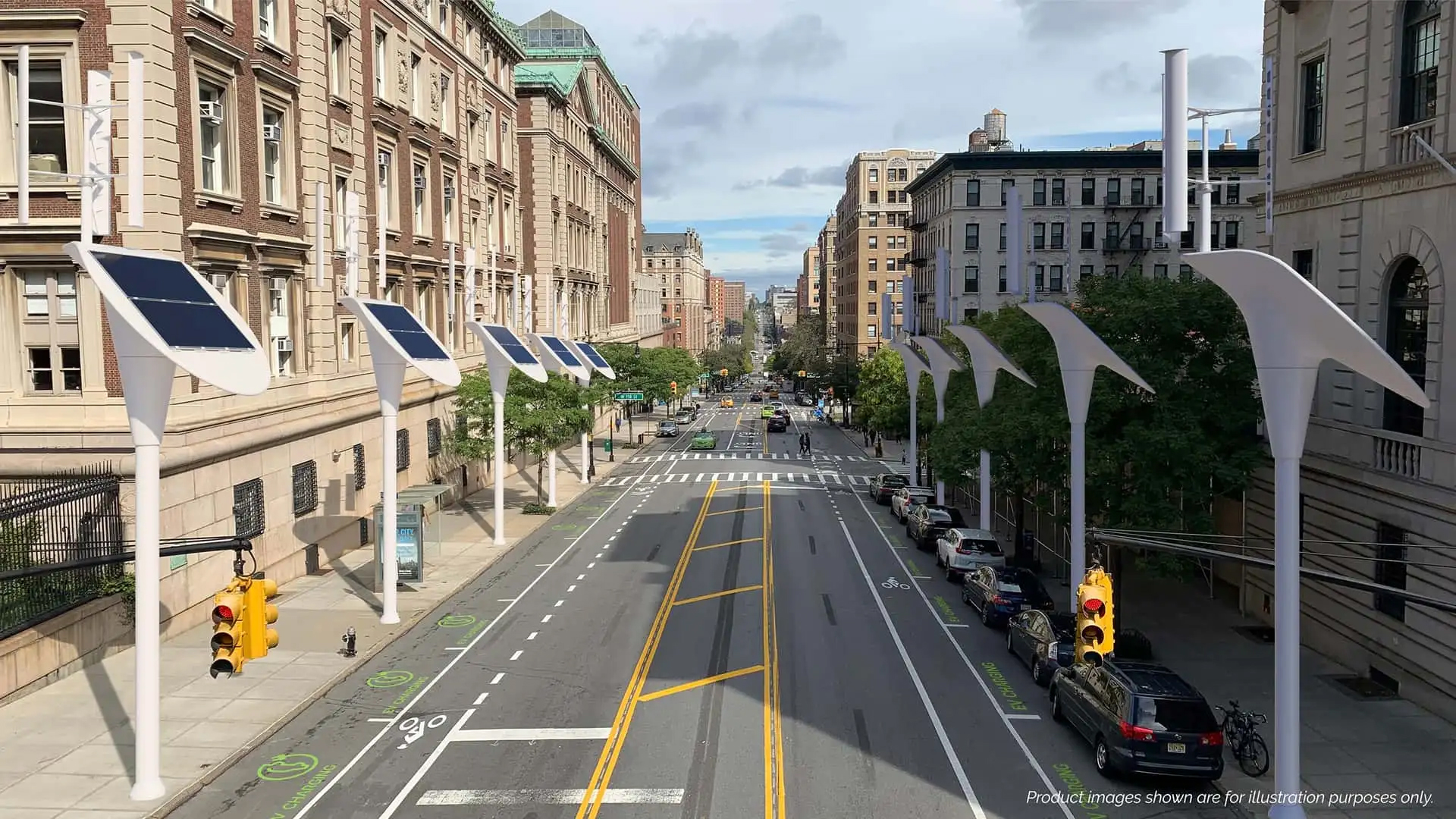These gigantic solar-powered streetlights could be the answer to EV charging in dense urban areas

US clean energy company, Beam Global, has just announced its latest innovation, which it hopes can replace the archaic streetlight network with something genuinely useful, particularly as we enter an age of increasing EV adoption.
The BeamSpot sustainable curbside electric vehicle (EV) charging infrastructure system, to give it its full title, replaces a standard street lamp with a module that harnesses solar, wind and utility-generated electricity to top up an integrated 15 kWh battery pack.
As a result, Beam Global claims that each unit can provide up to 220 "e-miles" to vehicles every day, with the 5.76kW outlet able to provide admittedly very slow battery top-ups while EV owners pop to the shops, park up for work or leave their vehicles curbside for the evening.
Perhaps the biggest draw is the fact that Beam Global says it can tap into the existing infrastructure, with its BeamSpot units requiring no "new or upgraded utility grid circuits, trenching, construction, easements, leases or complex permitting".
However, Beam Global will require a fair amount of space and some fairly lenient town planners, as the units measure 40 ft tall with the wind turbine option, or 30 ft without it installed. They also look a little bit like an alien invasion.
Beam Global hopes to rollout its innovative solution to those areas that require it most, such as multi-unit communities, where residents don’t have access to to a garage or off-street parking, as well as public venues where space isn’t perhaps so much of an issue.
Keen to be green

Curbside charging, where EV owners can plug into lampposts and other existing infrastructure, is nothing new, but Beam Global has added an another element by creating its own energy via wind and solar.
Sign up for breaking news, reviews, opinion, top tech deals, and more.
The presence of onboard battery packs allows BeamSpot to charge and discharge when required, while tapping into an existing low-circuit feed when the batteries run dry, or solar and wind power isn’t enough to meet demand.
Despite being a great idea, we can imagine some of the planning meetings surrounding the installation of these things could get pretty heated, seeing as they are such a blight on the surrounding landscape.
Plus, the addition of onboard battery packs, as well as expensive green charging tech, is likely to see the unit cost for each BeamSpot far outweigh those more compact options that tap into an existing grid.
As much as we agree with the fact that more needs to be done for those EV owners that don’t have access to home charging systems, we’re not sure 40 ft wind turbines lining residential streets is the answer.
you might also like

Leon has been navigating a world where automotive and tech collide for almost 20 years, reporting on everything from in-car entertainment to robotised manufacturing plants. Currently, EVs are the focus of his attentions, but give it a few years and it will be electric vertical take-off and landing craft. Outside of work hours, he can be found tinkering with distinctly analogue motorcycles, because electric motors are no replacement for an old Honda inline four.